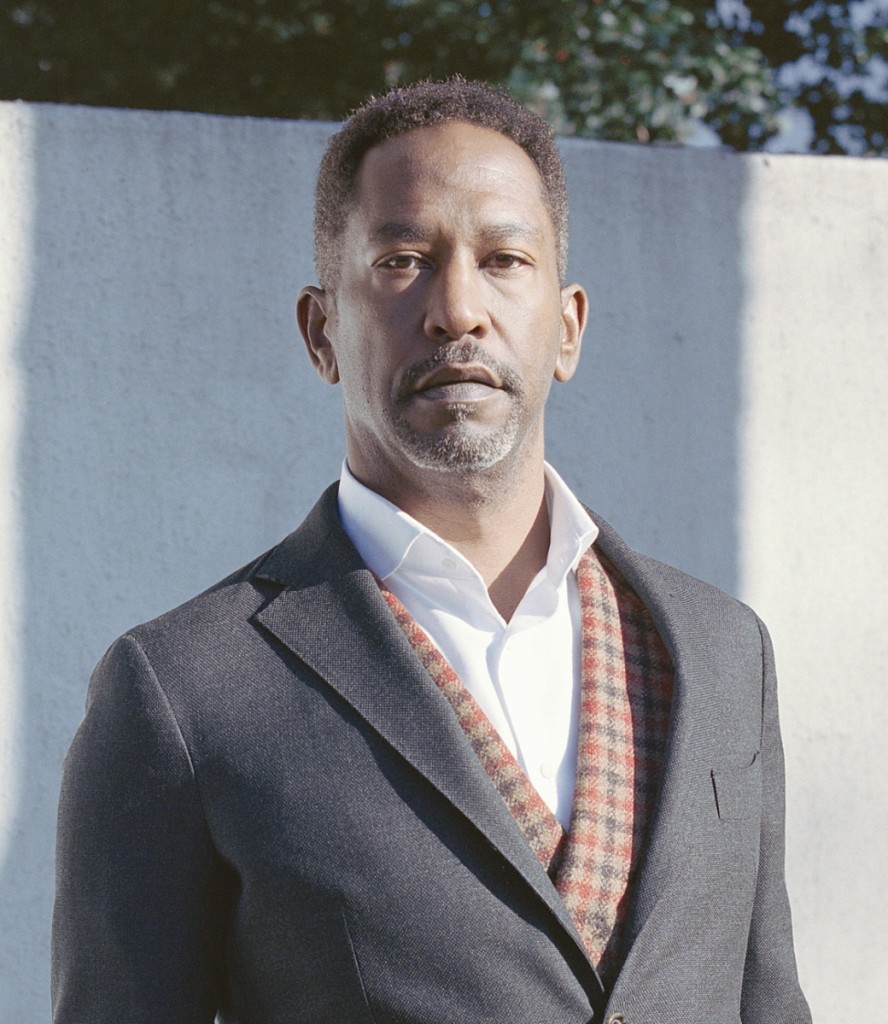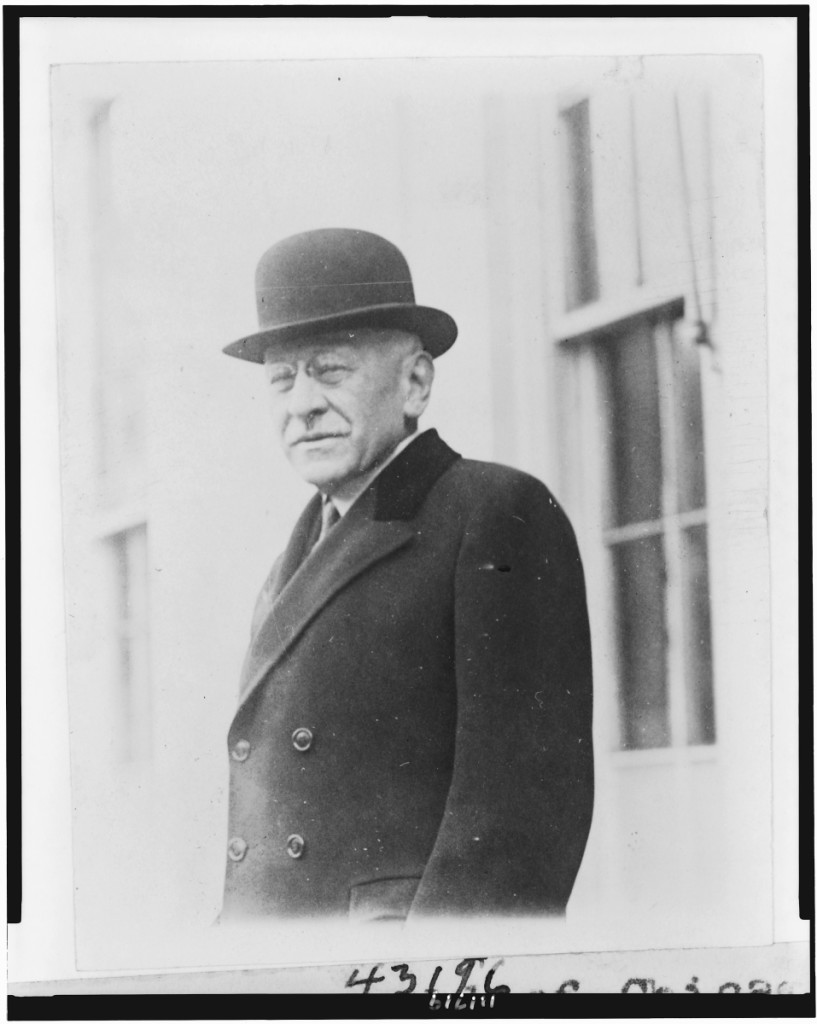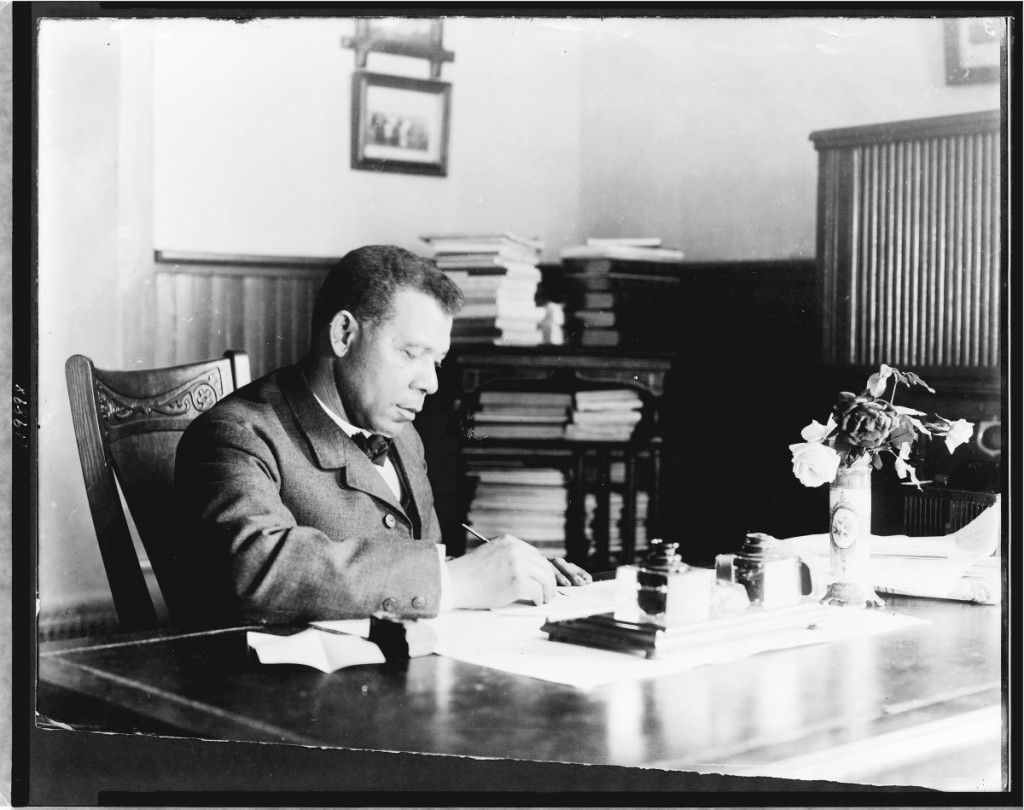In the early 1900s, a first-generation Jewish American from a German immigrant family would become one of the most successful business magnates in all of America. But unlike many other magnates of the Gilded Age, Julius Rosenwald did not sit on his hands and eat his wealth away. He instead helped build a vast landscape of school buildings for the Black community across the South in what would be one of the most ambitious educational initiatives of the Twentieth Century. Recognition is on its way as Brent Leggs, the executive director of the African American Cultural Heritage Action Fund at the National Trust For Historic Preservation, and his team move forward legislation that will preserve a number of Rosenwald Schools in the National Park System. We spoke with Leggs to learn more about the initiative and the impact Rosenwald has left across the Southern United States.
Let’s start from the top: who was Julius Rosenwald and what is a Rosenwald School?
Julius Rosenwald was a first-generation born immigrant to the United States who made a fortune in retail with Sears, Roebuck & Co. His family had fled persecution in Germany, so his own experience with bigotry and hatred made him empathetic to the plight of African Americans. Between 1917 and 1932, the Rosenwald School Fund invested $4.3 million and, along with $4.7 million contributed by the Black community, more than 5,300 architecturally advanced school buildings were created for Black children in the South across 15 states. They were built for educational purposes and community use, and you can imagine what it meant for the Black community to have state-of-the-art schools that were the centerpiece of community pride. Rosenwald was a social innovator, a champion of human rights and a justice-driven philanthropist.
Where did his drive come from? Who helped him along?
Rosenwald felt a social and personal responsibility to use his power, influence and privilege to uplift the Black community in the South. He was impressed by educator Booker T. Washington and moved into action and joined the board of Washington’s Tuskegee Institute in 1912. These two men shared a belief in self-help and self-reliance and the power of architecture as racial justice to envision a radical revolution in American education.
Why is the Rosenwald Schools story important?
Arguably, the Rosenwald Schools story is equal to Brown vs Board of Education. It’s one of the most important educational stories of Twentieth Century America. It’s also important in today’s time, telling how a multiracial community, including Booker T. Washington and Julius Rosenwald – men from different backgrounds – came together as social justice champions in their fight against the inequitable and poor educational facilities that Black kids and families had to endure across the South. By 1928, one-third of the South’s rural Black school children and teachers were served by Rosenwald Schools.
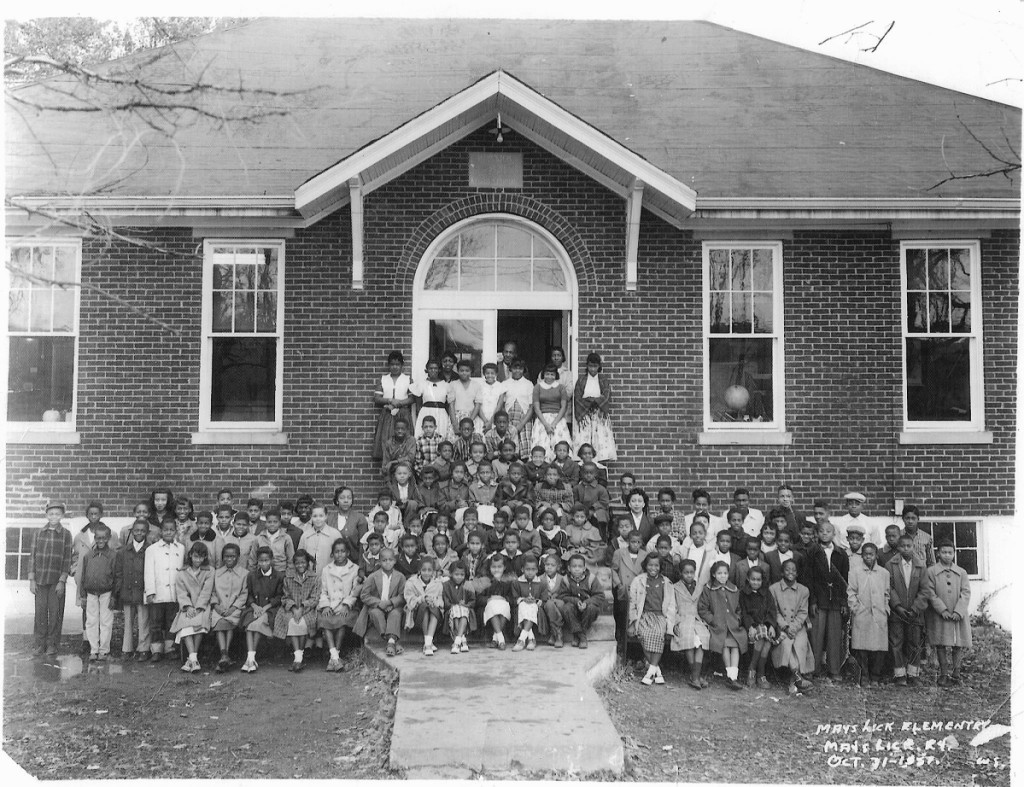
An archive photo dated 1957 shows the students outside of the May’s Lick Rosenwald School in Mayslick, Ky. The school was the 2020 grantee of the African American Cultural Heritage Action Fund, which provided a capital grant to help restore the building. Photo courtesy May’s Lick Community Development Board.
Was Washington’s Tuskegee Institute a starting line for the greater Rosenwald Schools initiative?
When I think of the Rosenwald Schools, I think of a social movement in response to a crisis in American education, and that was Booker T. Washington’s idea – the former slave who would, on a former plantation site, reclaim this agricultural state and create a Black cultural institution formerly known as the Tuskegee Institute. I’m so inspired by him, he understood that his institution had a community responsibility that went beyond the walls of the Tuskegee Institute. He wanted to bring first-class educational opportunities to Black families across the South. This dream for uplifting his race was born in his altruistic mind and he developed the partnership with Julius Rosenwald. For us today as we look back to the past and point this focus towards memorializing historical figures, we cannot minimize and reduce Booker T. Washington’s significant leading role in the establishment of the school building program.
Why was the Institute important?
Booker T. Washington created a safe space for academically trained leaders to thrive. In 1915, Tuskegee Institute published The Negro Rural School and Its Relation to the Community booklet, which in the early years of the Rosenwald Schools program produced designs for school buildings, outdoor toilets and teacher residences. Robert Taylor, the first Black graduate of MIT, and Professor William Hazel were recruited to establish the first architecture and mechanical industries program at Tuskegee. You had George Washington Carver, a graduate of Iowa, and he would go on to establish the science program at Tuskegee and advise on landscape design for these schools. There are so many examples of this place where talented people had a safe space to express their brilliance. Booker T. Washington has not been recognized enough as an activist and visionary. He was a leader in creating a safe space.
Apart from the funds, where do we see Rosenwald’s fingerprints?
The four-part investment program is the brilliance Rosenwald brought to it – it was to have investment by the fund and the Black community combined with investment by the public school system and the white community. The majority was invested by the fund and the Black community.
Given that money was not plentiful in the Black community, how did they raise that figure?
The Black community has been resourceful since the beginning of our experience in the United States. Education is the blueprint for achievement. A particular requirement was that the school had to sit on two acres of land, so the majority of land was donated. The building materials and the labor for construction, all of that contributed to it. The builders would organize the community and follow the blueprint to construct these schools. Given that the buildings were not just used for education, but also community uses, you can imagine that it was meaningful for them to be constructed by Black hands and Black people who are invested in the community.
And what of the architecture?
Tuskegee and the school of architecture designed the first phase of the Rosenwald Schools building program, and then when the Rosenwald Schools Fund took over the designing, the architecture became more sophisticated. Led by S.L. Smith, he provided designs for buildings that faced east-west and buildings that faced north-south, carefully using natural light in the process. There was an archetype of design often seen in the fenestration of the windows. Many have a full row of windows designed to maximize the amount of sunlight that would enter the school building, which would enhance performance and sanitize spaces for health and hygiene. There were a lot of benefits in the way the schools were designed. The architecture of the schools was a tangible statement of the equality of all children, and their programming made them a focal point of community identity and aspirations.
When did the interest around the Rosenwald Schools begin to gain momentum?
In 2002, the National Trust listed the Rosenwald Schools on America’s 11 Most Endangered Historic Places List to shine a spotlight on their remarkable story and legacy, but also to convey that they were threatened with loss, abandonment, underfunding and decay. That listing would lead to the National Trust’s Rosenwald Schools Initiative, which was the largest diversity-related program established by the trust at the time. As a result, we joined forces with grassroots preservationists, alumni and local and statewide officials working to preserve this important but little-known piece of our nation’s history, with much of the work provided in technical help, regional convenings and producing publications about Rosenwald Schools. It has been transformative. For nearly two decades, we have a deep commitment to supporting Rosenwald Schools preservationists and continue to work to elevate the history.
You weren’t with the trust yet at that time, but you seemed to be on a parallel trajectory.
From 2003 to 2004, as part of my graduate school studies, I conducted a Kentucky statewide inventory of Rosenwald Schools and I started working for the trust in 2005. During this process, I learned that my mother and father attended Rosenwald Schools in Kentucky. I then realized that my family’s connection to this history, Washington and Rosenwald was real and ongoing and had directly impacted my life through my parents attending these schools.
What did your inventory reveal?
The majority of what was left had been converted into community spaces. That was most typical for the use of these schools, a way to both memorialize this history while also continuing the historic use of community space. But what stayed with me most is the conviction and commitment of grassroots preservationists who were fighting with limited resources and funding to save this overlooked story and the physical evidence of their community’s past.
And how did it start at the trust?
John Hildreth was director of the National Trust’s Charleston field office and he pitched the idea to create the initiative. After I joined the National Trust and established myself as a leader in this work, we collaborated with our colleagues to really grow the reach of this program. I’m proud to say that through the program I currently run, called the African American Cultural Heritage Action Fund, that we have established a $1 million Rosenwald Schools endowment. It’s a small start but we’ll be able to provide microgrants in perpetuity.
Across all 15 states, what does the current inventory look like?
Today, through our research at the National Trust, we anticipate only ten percent are still standing. There has been significant erasure. That’s due to a variety of reasons, but we suspect it had a lot to do with Black Americans who migrated north with the hopes of moving to an industrial economy, fleeing the South’s terrorism and racism and the communities where these were constructed. Their rural setting and often deteriorating condition make the preservation much more difficult.
We’ve got a bill in the House and Senate: H.R. 3250 S. 1863 – Julius Rosenwald and the Rosenwald Schools Act of 2020. What does the bill do?
The National Trust and National Parks Conservation Association have collaborated on the newly created Julius Rosenwald and Rosenwald Schools National Historical Park Campaign with the goal of establishing a multi-site park in the National Park System telling the story of Julius Rosenwald and Rosenwald Schools. This would be the first of more than 420 National Park Service units to commemorate the life and contributions of a Jewish American. The House and Senate legislation (H.R. 3250, S. 1863) direct the Department of the Interior to conduct a special resources study of applicable sites and once completed, we look forward to working with our partners and Congress to pass legislation that establishes a new unit of the National Park System honoring Julius Rosenwald and the Rosenwald Schools story.
Are you confident it will pass?
I am 100 percent positive it will happen. We have dogged advocates like Dorothy Canter, Robert Stanton, Stephanie Deutsch, Pam Bowman, Alan Spears and so many others working on this campaign, but creating parks by way of Congress is always a challenge in terms of timing. It could happen in a year or in the next five years. I’m certain we will advocate effectively to establish this national park. For us that will be a real success – looking back from 2002 and taking these small, but transformational steps – and more than two decades later, having permanently established the Rosenwald Schools as a national park. This remarkable social movement provides lessons and wisdom for present and future generations. This history is deserving of this recognition and designation.
What will the park look like?
It’s a nontraditional footprint as it would be a discontinuous boundary. Instead of picking one school across 15 states that exemplified the architectural story and the historical significance, the vision is to identify three to five different locations across the 15 Southern states that help to tell the tale of the various stories: the civil rights story, the educational story, the philanthropic story. The final piece is connecting it to Chicago where Julius Rosenwald had his business in Sears, Roebuck and Co.
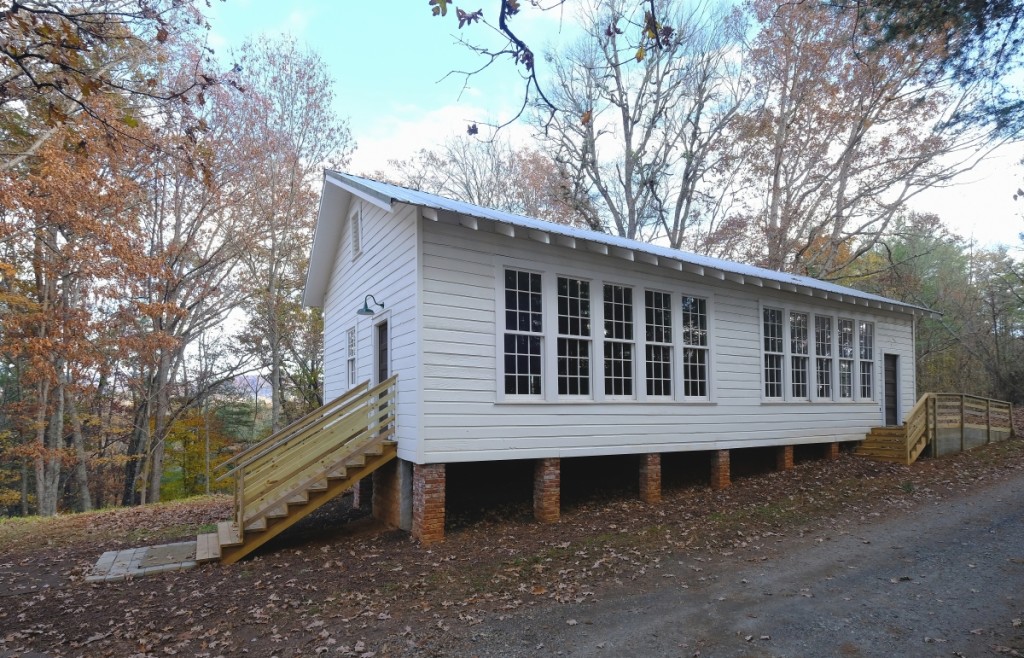
The Anderson Rosenwald School in Mars Hill, N.C., was the 2018 grantee of the African American Cultural Heritage Action Fund, which provided a capital grant to help restore the building. Progress is seen here in 2019. Nancy Pierce photo.
We hear of modern day philanthropists going to third world countries to build schools, but are there any other similar examples like Rosenwald that stand out in American history?
In the state of Delaware, there was a school program funded by the DuPont family. That school program has not received the recognition or documentation and the assessment that it needs to understand its importance. As a Twentieth Century story, DuPont was similar in that it was philanthropy by way of an American business magnate. During Reconstruction, the Freedman’s Bureau worked to establish schools and colleges for Black students across the South and worked with private charity organizations to help fund their work.
How do we tie it to present day?
I think there are lessons that we can bring forward by learning from the Rosenwald Schools – folks from different backgrounds and experiences that had a shared vision for correcting an injustice in American society. In many ways, that’s what we see in Black Lives Matter, it’s a multiracial, multigenerational community, but at this moment it is related to policing and other systemic issues. Preservation and philanthropy have the potential to be used tools for justice and I feel like Booker T. Washington and Julius Rosenwald demonstrated what it meant to empower a marginalized community, and most importantly to value them. To not see them as deficit-based, but understanding that there are central components to establishing a thriving community and it includes a first-class educational space. That’s humanitarian work, it’s justice-driven work, it requires significant understanding. If corporations, activists and educators wanted to draw lessons from Rosenwald and Washington and bring those lessons forward, they would continue to fight against the inequitable investment in historic Black neighborhoods, historic sites and schools and continue to swing the pendulum to justice. Washington and Rosenwald have left us a blueprint to follow. That’s why we advocate for the preservation of this cultural heritage and believe this unique American story must be memorialized as a national park.
-Greg Smith

